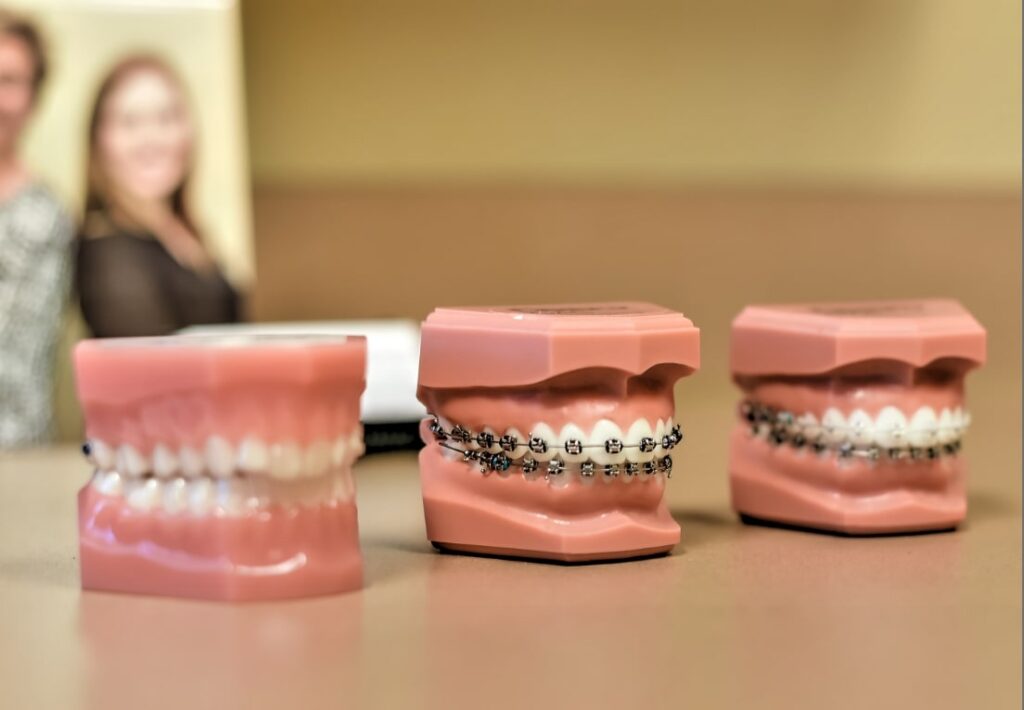Comprehensive Guide to Orthodontics Procedures for Fixing Oral Misalignments
In the world of orthodontics, the journey to accomplishing a flawlessly straightened smile includes a myriad of procedures tailored to fix oral imbalances. From traditional braces to undetectable aligners and also surgical alternatives, the area of orthodontics uses an array of remedies to attend to differing degrees of oral abnormalities. Comprehending the intricacies of each treatment, including their devices, benefits, and potential drawbacks, is important in making notified choices about one's orthodontic treatment. As we navigate via the extensive guide to orthodontic procedures for correcting dental imbalances, the elaborate information of each approach will certainly unravel, shedding light on the path towards a harmonious and functional dental positioning.
Orthodontic Procedures Review

In enhancement to clear aligners and traditional dental braces, orthodontists may also advise other interventions like headwear, palatal expanders, or retainers to address details alignment problems (orthodontics). These procedures are customized to each individual's special needs and may involve a combination of treatments to accomplish the desired outcomes. Routine modifications and surveillance are critical components of orthodontic therapy to ensure progression gets on track and to make any kind of essential adjustments along the way. By undertaking orthodontic procedures, patients can not just attain a straighter smile however also improve their general oral health and wellness and function.
Conventional Braces: Exactly How They Function
When taking into consideration orthodontic therapies for oral misalignments, typical braces stand apart as a tried and true method for remedying teeth placing. Conventional dental braces include braces, cords, and bands that work with each other to apply constant pressure on the teeth, progressively relocating them into the preferred positioning. The brackets are affixed to the teeth utilizing an unique adhesive, and the wires are threaded through the braces. By readjusting the stress of the wires, orthodontists can manage the direction and force used to each tooth, directing them into correct placement over time.
One trick aspect of exactly how typical dental braces work is the procedure of bone makeover. As stress is applied to the teeth via the braces, the bone bordering the teeth is improved to support the new tooth placements. This makeover is vital for the long-lasting stability of the remedied positioning. People will certainly need regular modifications at the orthodontist's office to make certain the dental braces continue to apply the right pressure for reliable teeth motion.
Unseen Aligners: Cons and pros
These clear, personalized trays are virtually unseen when worn, making them an enticing alternative for people looking for a more cosmetically pleasing orthodontic treatment. Individuals can eliminate the aligners before consuming or cleaning their teeth, decreasing the risk of food obtaining stuck in the device and simplifying the cleansing procedure.

Surgical Orthodontic Options
Surgical treatments in orthodontics present practical alternatives for dealing with complicated dental imbalances that may visit the website not be successfully fixed via conventional orthodontic treatments. While unseen aligners and typical dental braces can deal with numerous orthodontic problems, specific cases require surgical intervention to accomplish optimum results. Surgical orthodontic alternatives are normally recommended for extreme malocclusions, substantial jaw disparities, and instances where the underlying bone structure requires adjustment to attain proper positioning.
One typical surgical orthodontic treatment is orthognathic surgery, which includes rearranging the jaws to fix functional concerns such as difficulty talking or chewing. This surgical treatment is usually performed in partnership with an orthodontist who helps straighten the teeth prior to and after the procedure. Surgical orthodontics may also include treatments to expose impacted teeth, remove excess gum tissue, or improve the jawbone to develop an extra harmonious face account.
Before considering surgical orthodontic alternatives, patients undergo a thorough analysis to establish the need and possible benefits of such interventions. cumming orthodontist. While surgery may appear difficult, it can considerably enhance both the feature and looks of the smile in situations where standard orthodontic therapies fall short
Retainers and Post-Treatment Treatment

Post-treatment treatment entails following the orthodontist's instructions diligently. This may consist of proper oral hygiene practices, attending follow-up visits, and dental implant bridge putting on the retainers as recommended. Failure to follow post-treatment care directions can result in relapse, where the teeth slowly move back in the direction of their initial positions. Regular retainer wear, great dental hygiene, and normal oral check-ups are crucial for preserving the results achieved through orthodontic surgical procedure and making sure the long-lasting stability of the dealt with dental positioning.
Verdict
Finally, orthodontic treatments use various choices for correcting oral misalignments. Conventional braces make use of steel brackets and wires to move teeth right into appropriate placement. Unseen aligners give an even more discreet choice yet may not be suitable for all cases. Surgical orthodontic options are available for much more extreme misalignments. Retainers are commonly utilized post-treatment to keep the brand-new alignment. In general, orthodontic treatments can properly improve site web dental wellness and visual look.
As we browse via the thorough guide to orthodontic treatments for correcting oral imbalances, the intricate details of each approach will unravel, dropping light on the path toward a practical and unified dental placement. - cumming orthodontist
One of the most common orthodontic therapies is the use of braces, which consist of metal braces and cords that use gentle pressure to progressively shift teeth right into the preferred placement.When taking into consideration orthodontic treatments for oral misalignments, traditional dental braces stand out as a time-tested method for dealing with teeth placing. Furthermore, undetectable aligners might not be appropriate for complex orthodontic concerns that call for even more considerable teeth activity, as they are usually recommended for moderate to modest cases. Retainers are tailor-made orthodontic tools made to hold teeth in their dealt with settings after the conclusion of orthodontic treatment.